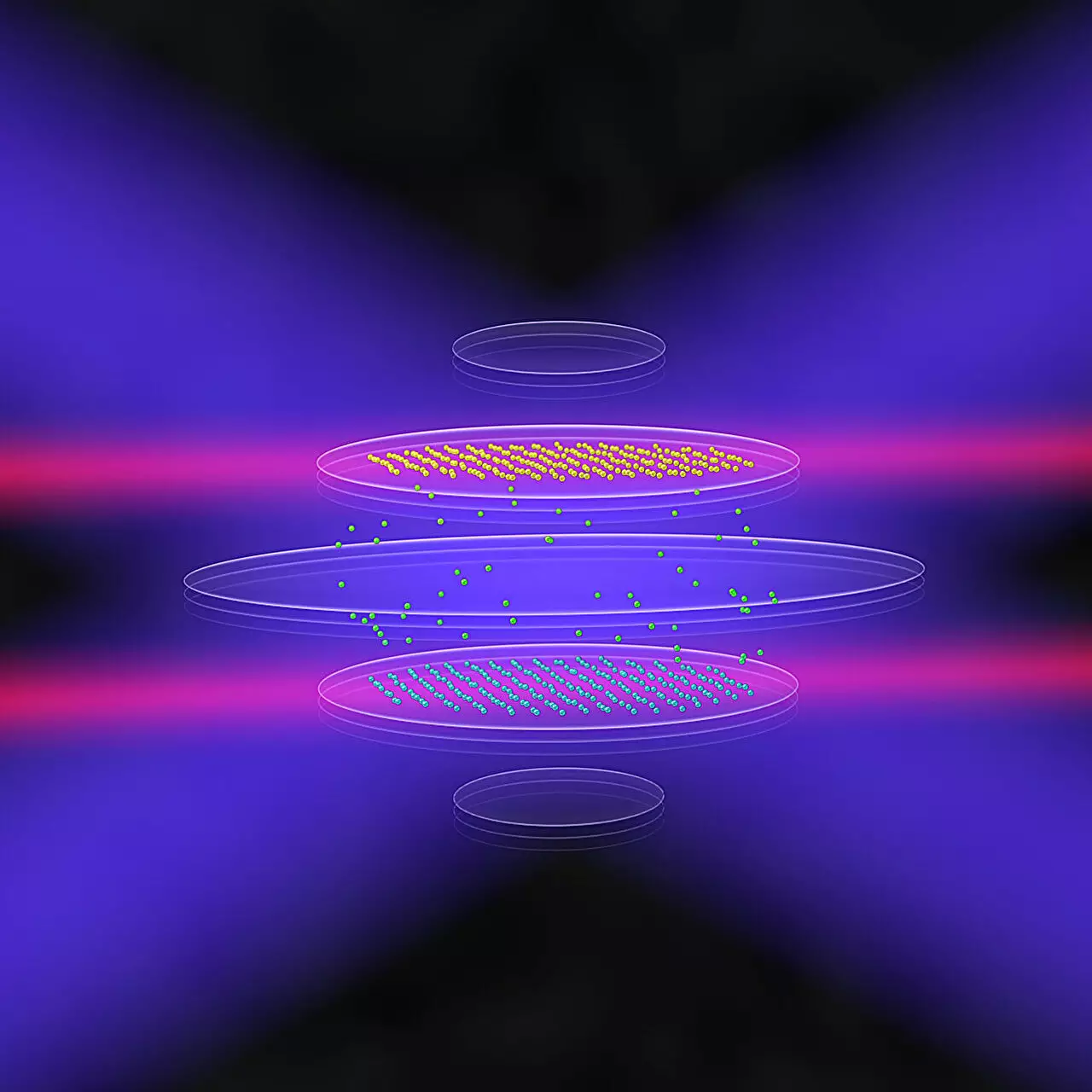As the field of quantum technology progresses, researchers face significant challenges in scaling and improving the functionality of quantum devices. Many existing systems, particularly those utilizing trapped ions, are largely restricted to one-dimensional chains or two-dimensional planes. This limitation hinders the potential to explore advanced quantum phenomena and processes critical for the development of quantum computing and sensor technology. Recently, a collaboration among scientists from India, Austria, and the United States, including notable researchers from JILA and NIST, has provided a fresh perspective on overcoming these limitations by proposing the construction of stable, multilayered structures of trapped ions.
Trapped ions serve as a leading candidate for quantum computing due to their high degree of controllability. These ions can be manipulated with precision using laser or microwave pulses, which enable the encoding of information in their quantum states. This encoded information forms the basis of quantum bits, or “qubits,” integral to quantum computation. However, most current systems remain in simpler configurations, which restrict their ability to harness the rich behaviors found in more complex, three-dimensional arrangements.
The breakthrough led by researchers in this international collaboration represents a potential paradigm shift in how ions can be arranged and utilized in quantum devices. Their work focuses primarily on enhancing the stability of ion configurations by modifying the electric fields used to trap the ions, allowing for the assembly of structures beyond simple two-dimensional layers.
Historically, the notion of stacking ions into three-dimensional arrangements has proven challenging due to the difficulty in stabilizing and controlling ion interactions within complex structures. Previous attempts to form such structures yielded spheroidal formations but fell short of achieving true multilayer constructs. Addressing this issue, the research team delved into the mechanics of a type of ion trap known as a Penning trap—an advanced apparatus designed to exploit the balance of electrical and magnetic forces to maintain ion stability.
By tweaking the electric fields in these traps, researchers were able to coax ions into forming stable bilayer crystals. This novel approach not only stabilizes the configurations but also minimizes noise, promoting enhanced measurement accuracy. The significance of this advancement cannot be overstated, as it opens doors for exploring complex quantum capabilities that had previously been challenging, if not impossible, to access.
The ability to stack ions into multilayer arrangements has far-reaching implications for the future of quantum technologies. According to Dr. Athreya Shankar, a postdoctoral researcher involved in the study, the introduction of bilayer crystals could facilitate the generation of quantum entanglement across larger subsystems. This capability is essential for optimizing various processes across different quantum hardware platforms, enhancing the scalability and robustness of quantum technologies as a whole.
Further experimentation in Penning traps is expected to yield exciting results, providing researchers with insights into the practical applications of this three-dimensional approach. Moreover, the enhanced structures may accelerate the progress of quantum simulations and sensing technologies. By coupling vertical and radial degrees of freedom in the motion of ions, scientists can mimic complex behaviors typically encountered in strong magnetic fields under highly controllable conditions.
The collaborative effort among researchers in India, Austria, and the U.S. is a testament to the global commitment to advancing quantum technology. With significant findings published in esteemed journals, this research may inspire further innovations and modifications in the construction of ion traps, paving the way for a new generation of quantum devices.
As ongoing exploration continues, researchers are eager to validate their theoretical frameworks through experimental trials. Confirming the feasibility of multilayer structures could significantly enhance the capability of quantum systems to conduct more intricate quantum operations and simulations, allowing for the potential discovery of new physics.
The ambition of constructing three-dimensional stacked structures from trapped ions has the potential to transform quantum computing and sensor technology. With promising experimental results on the horizon, the increased complexity and versatility offered by multilayer arrangements foster unprecedented opportunities for quantum information science. As the international research community collaborates and innovates, it may soon witness significant advancements in quantum technology, heralding a new era of scientific exploration and application.


Leave a Reply